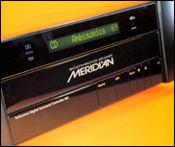| Columns Retired Columns & Blogs |
LATEST ADDITIONS
|
Feb 06, 2000 |
143 comments
When your pals come over to hear your audio system, what do you pull out to impress them?
What is your favorite demo disc?
Here it is:
83% (133 votes)
I don't do demos.
17% (28 votes)
Total votes: 161





